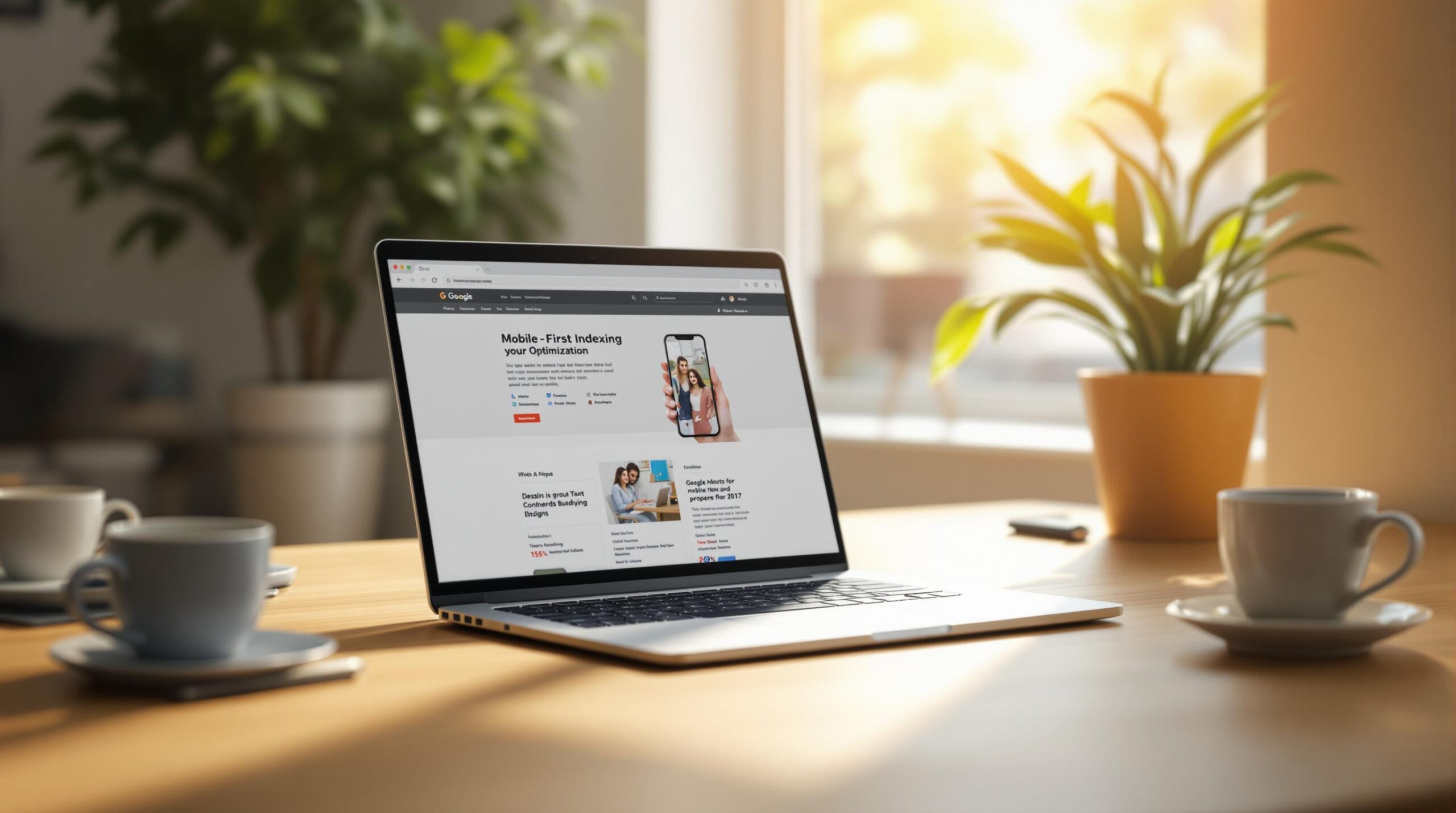Google now prioritizes the mobile version of your site for search rankings. If your site isn’t optimized for mobile, you risk losing visibility. Here’s how to ensure your site is ready:
Key Steps:
- Test Mobile-Friendliness: Use Google’s Mobile-Friendly Test to identify issues like text size, touch targets, and loading errors.
- Speed Optimization: Compress images, lazy load content, and minimize code to improve loading times.
- Match Mobile & Desktop Content: Ensure your mobile site has the same content, navigation, and structured data as your desktop version.
- Fix Mobile Errors: Address viewport settings, touch spacing, and resource access issues in Google Search Console.
Tools to Use:
- Google Mobile-Friendly Test: Check usability issues.
- PageSpeed Insights: Analyze site speed and performance.
- Rich Results Test: Validate structured data for mobile.
By following these steps, you can improve your site’s mobile experience and maintain strong search rankings.
How and why should you use the mobile friendly testing tool?
Testing Tools for Mobile-First Indexing
Google’s Mobile-Friendly Test
Google’s Mobile-Friendly Test checks how well your site works on mobile devices. It examines things like viewport settings, content scaling, text readability, spacing of touch elements, and whether resources load properly. The tool highlights specific problems and provides clear suggestions to improve your site’s mobile performance. For a deeper look at your site’s speed and overall performance, you can also try PageSpeed Insights.
Mobile Usability Improvements
Mobile Design Check
Make sure your mobile design works smoothly by focusing on key usability features. Use Chrome DevTools‘ device emulation to check your viewport settings. Ensure touch targets are at least 48×48 pixels with enough space between them to avoid accidental taps.
For text readability, stick to font sizes of at least 16px for body text and 20px for headlines. Test how your responsive layout performs on popular device screen sizes like:
- iPhone SE (375x667px)
- iPhone 14 Pro Max (430x932px)
- Samsung Galaxy S23 (360x800px)
Mobile Speed Optimization
Speed is a major factor for both user experience and search engine indexing. Use these tips to optimize your mobile performance:
- Use responsive images with
srcsetandsizesattributes. - Compress images (aim for 70–80% compression) while keeping quality intact.
- Switch to WebP format, but include JPEG/PNG as fallback options.
- Apply lazy loading for images that appear below the fold.
Code Optimization
- Minify CSS, JavaScript, and HTML to reduce file sizes.
- Eliminate unused code and limit third-party scripts.
- Implement critical CSS to prioritize above-the-fold content.
- Set up browser caching with proper cache headers.
After improving speed, focus on refining navigation and layout for a better mobile experience.
Mobile Menu and Layout
Create a navigation menu that’s simple and user-friendly. A hamburger menu should expand to display well-organized sections with enough spacing for easy tapping. Add a sticky header so users can access key navigation options while scrolling.
When designing your layout, keep these points in mind:
- Organize content with a clear hierarchy and proper visual separation.
- Use enough white space to avoid clutter.
- Make form fields easy to tap and fill out.
- Place primary actions within thumb reach for convenience.
- Add an easily accessible search function.
Finally, test your design on actual devices to spot and fix any usability problems that could affect mobile-first indexing.
sbb-itb-880d5b6
Mobile and Desktop Content Match
Content Comparison
Making sure your mobile and desktop content match is key for mobile-first indexing. Use Chrome DevTools’ device emulation to review your pages step by step. Pay attention to these areas:
- Primary content: Check headlines, body text, and where media is placed.
- Navigation elements: Ensure menus and links work the same way on both versions.
- Interactive features: Test forms, buttons, and anything clickable.
- Meta content: Verify titles, descriptions, and canonical tags.
Activate the device toolbar (Ctrl+Shift+M) to switch between views. Also, confirm that JavaScript elements load properly on both mobile and desktop versions.
After that, make sure your structured data is consistent across devices.
Mobile Structured Data
Once your content matches, check that your structured data is aligned for both mobile and desktop. Here’s how to test your mobile structured data:
- Use the Rich Results Test to check your schema markup.
- Compare the structured data output for mobile and desktop.
- Verify that all required properties are included in the mobile HTML.
Watch out for these common issues:
- Missing or incomplete Product schema on mobile e-commerce pages.
- Organization schema not set up correctly on mobile contact pages.
- Article schema missing key properties on mobile blog posts.
Language Tag Setup
If your site supports multiple languages, setting up hreflang tags correctly is essential for mobile-first indexing. Here’s what to do:
- Add hreflang tags in both the HTML head and XML sitemaps.
- Make sure language versions link to each other bidirectionally.
- Include an
x-defaulttag for fallback language options.
Test your hreflang setup to confirm mobile pages load the right language version. Check that mobile URLs keep their language settings and regional targeting intact.
For the best results, use a responsive design that serves the same content on all devices while adjusting the layout for different screen sizes. This avoids the need for separate mobile URLs and minimizes any content mismatches that could impact mobile-first indexing.
Common Mobile Index Problems
Resource Access Fixes
Blocked resources can lead to crawling issues when testing for mobile-first indexing. Check your robots.txt file to ensure Google’s mobile crawler can access all necessary files. Pay special attention to user-agent directives for CSS, JavaScript, and image directories, and confirm that your CDN settings allow crawler access.
Use the URL Inspection tool in Google Search Console to confirm resource access. Also, make sure third-party scripts, fonts, and dynamic content load without issues.
Once resource access is sorted, focus on optimizing your mobile images.
Mobile Image Setup
Improve mobile image performance with responsive techniques like srcset and sizes, lazy loading, and proper sizing for mobile devices.
Here are some key image optimization tips:
- Use JPEG compression between 60% and 80% for quality and efficiency.
- Limit image width to 1,200px.
- Keep file sizes under 200KB per image.
- Add descriptive alt text to support accessibility.
After handling images, move on to fixing common mobile-specific errors.
Mobile Error Correction
Some errors can hurt mobile indexing. Here’s how to tackle them:
- Viewport Configuration: Ensure your meta viewport tag is set up correctly. Avoid fixed-width settings that cause horizontal scrolling.
- Touch Element Spacing: Touch targets should be at least 48x48px, with 8px spacing between elements. Test interactivity in mobile view to confirm usability.
- Mobile Redirect Issues: Check for proper redirect chains, fix any redirect loops, and implement canonical tags correctly.
Use Chrome DevTools’ Network panel to spot mobile loading errors. Simulate different connection speeds with throttling to identify timeout issues. For a broader view, monitor your mobile error rate in Google Search Console’s Mobile Usability report and address flagged errors or warnings swiftly.
Conclusion
Key Takeaways
Mobile-first indexing is now central to SEO. To ensure your site is ready for this shift, use tools like Google Search Console, the Mobile-Friendly Test, and PageSpeed Insights. These tools help pinpoint issues that impact mobile performance and user experience.
Key steps for mobile optimization include:
- Leveraging key testing tools to check mobile compatibility
- Ensuring mobile and desktop content are aligned
- Improving how resources are accessed and delivered
- Monitoring mobile usability metrics regularly
These steps provide a clear starting point for improving your site’s mobile readiness.
Action Plan
Here’s how to put these steps into practice:
- Evaluate Your Site
Use Google Search Console to conduct a mobile audit and uncover any issues. - Address Technical Issues
Fix critical technical elements like viewport settings, responsive design, and mobile redirects. - Refine Your Content
Ensure the content on your mobile site mirrors your desktop version in quality and relevance. - Regular Monitoring
Keep an eye on mobile performance and resolve any new issues as they arise.







